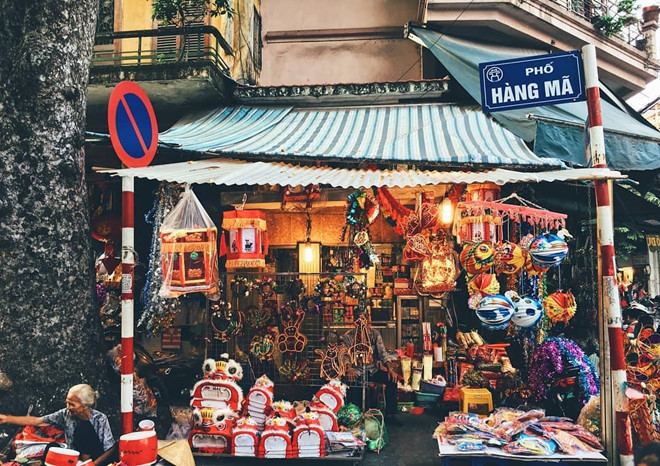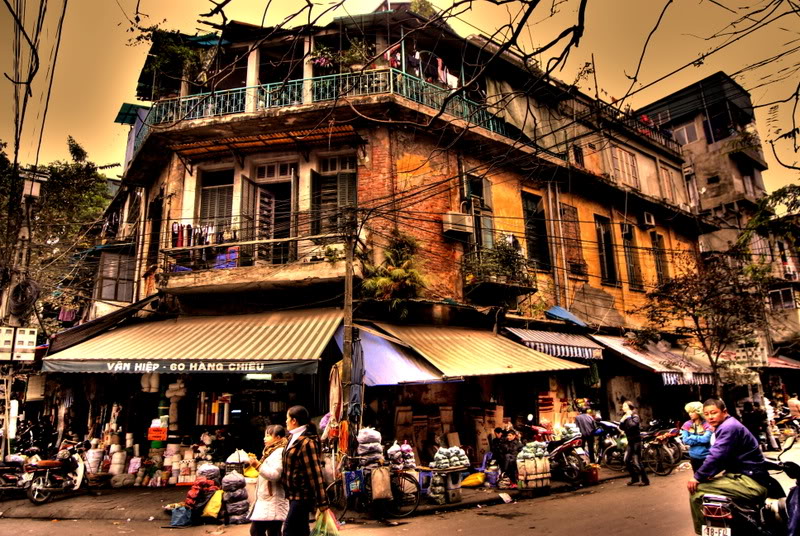Hanoi Old Quarter is located on the northeast of Hanoi, belonged to Hoan Kiem district. The location of the old town was purposely in between the imperial citadel and the red river which is considered an advantageous area for trading development.
Old Quarter’s history was dated back to the 11th century when King Ly Thai To decided to move the capital from Hoa Lu (Ninh Binh) to Hanoi. From 13th century, the place began to attract craftsmen from all over the neighbor areas, through the time organized themselves into craft cooperatives and guilds. Inhabitants from the same villages flocked together and operated on the same street, making the streets to have a homogenous look.
In the 15th century, there were at least 36 crafts guilds in the quarter which doesn’t equal to 36 streets but double that number – 76 streets. Streets that belonged to a craft guild will be name “Hang” (wares) following by the name of the product the guild was specialized in. For example, Hang Tre street indicated that the street where bamboo (tre) wares were being sold.
These days, most Vietnamese and Westerners are familiar with the phrase “Hà Nội – Ba mươi sáu phố phường” (translated as “Ha Noi – 36 districts” or “Hanoi – 36 Old Streets”), or “Phố cổ Hà Nội” (translated as “Hanoi’s Old Quarter”).
Now we will take a look at the list of 36 streets: Hang Bo, Hang Bac, Hang Gai, Hang Buom, Hang Thiec, Hang Hai, Hang Khay, Ma Vi, Hang Dieu, Hang Giay, Hang Lo, Hang Cot, Hang May, Hang Dan, Pho Moi, Phuc Kien, Hang Ngang, Hang Ma, Hang Mam, Hang Than, Hang Dong, Hang Muoi, Hang Non, cau Dong, Hang Hom, Hang Dau, Hang Bong, Hang Be, Hang Thung, Hang Bat, Hang Tre, Hang Voi, Hang Giay, Hang The, Hang Ga, Hang Da.
Most tourists are eager for exploring the old streets well-known for each one’s specialized industry.
Hang Gai Street offers silk clothing ready-made and tailored, embroidery, and silver products. Hang Quat, the street that formerly sold silk and feather fans, now stuns the visitor by its brilliantly colored funeral and festival flags and religious objects and clothing. To Tich Street connects the above two and is still the wood turner’s street. Hang Ma glimmers with shiny paper products, such as gift wrappings, wedding decorations and miniature paper objects to burn for the dead. Lan Ong Street is a sensual delight of textures and smells emanating from the sacks of herbal medicinal products: leaves, roots, barks, and powders, etc. Coming here, you may feel as if you were in a classical-styled maze in terms of both architecture and product types. Don’t get lost here and remember bring the map!
Don’t hesitate to pack your luggage, come and discover the amazing land. For more information please visit our family website:
For Vietnam online visa Govietnamvisa.com
For Vietnam local tours: Govietnamtourist.com
For exploring more parts of Vietnam:
http://www.vietnam-online.org/




